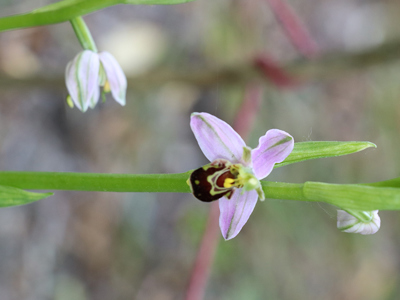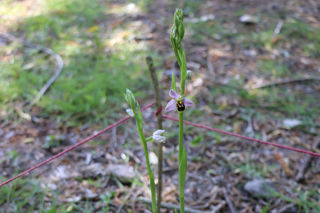
Wildwood’s mini re-wilding
12th Jun 2020

Under the dark cloud that was Covid and the park's closure, nature is doing very well.
It would normally be my pleasure to introduce the unfolding natural world of early summer at Wildwood to our visitors, in person. In the meantime, however, the wildlife continues unabated, with mole hills and oak seedlings appearing in the picnic area where it is not being disturbed. There have been baby birds a-plenty in the vole yard where animals and staff work in harmony; nuthatches, tree creepers, wrens and blackbirds. It is one of Wildwood’s most bio-diverse areas – with wild water shrews and weasels amongst other things (see the February 2020 blog). Then there are the blue tits above the conservation office window – no camera in this one. Sadly the blue tits near the rat barn with the nest-box -cam didn’t make it and the clutch was abandoned. Most likely this was a first attempt at nesting. Birds have to learn their brooding and parenting skills and frequently fail first time. Fortunately, blue tits live from 3 to 10 years, so she will have another opportunity next year.
All of the above would have happened in any case. What has been even more astonishing is Wildwood’s mini-rewilding.

Orchids have appeared on the lawn in front of the office, where normally school parties wait, children clamber on the wooden sculptures, families sit at the picnic tables or folks stand around and wait for us to open. I say, ‘appeared’ but orchids are not like weeds, they are many years in the making. Even though this particular species, the marvelous and beautiful, Bee Orchid – Ophrys apifera, is famous for colonising disturbed sites, it can take up to six years to flower from the seed. Before that can happen it must find a fungus in the soil and form an ‘association’. Underground fungal threads penetrate into the germinating orchid’s cells and once there help provide the plant with nutrients that it would not be able to extract from the poor soils. Actually, it is thought that nearly all trees and living plants, have this symbiotic (mutually beneficial) relationship.
Now consider its appearance – the shape and pattern of the flower mimics a bumblebee! This is a ruse to attract a bee to make an attempt at mating and thus pollinate the orchid. It works in the Mediterranean region where the flowers even produce a special scent, for a particular type of bee, which we don’t have here, unfortunately. In the cooler north the plant is self-pollinating. Still pretty impressive, though.
We will take steps to protect our bee orchids. When we welcome you back on the June 15th, the plant should still be in flower for all to view. A silver lining in a lifting cloud!
